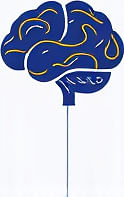Managing Sensory Needs for Autism in Remote Work
 by Thaddeus Blanda
by Thaddeus Blanda
Remote work can present both challenges and opportunities for individuals with autism, particularly regarding sensory needs. This article explores practical strategies to create a supportive environment, enhance productivity, and achieve better work-life balance.

Remote work has become a common option for many, and for adults with autism, it can offer a way to handle sensory needs more effectively. In the quiet of home, adjustments are possible that might not be in a traditional office. One key aspect is recognizing how sensory sensitivities can impact daily tasks. For instance, autism often involves heightened responses to sounds, lights, or textures, which can disrupt concentration.
Creating a sensory-friendly workspace is essential. Start by identifying triggers in your environment. Bright overhead lights might cause discomfort, so consider using softer, adjustable lighting. A simple desk lamp with a dimmer can make a difference. Noise from outside, like traffic or family members, is another common issue. Investing in headphones that block out sound can help maintain focus during work hours.
Organization plays a vital role in managing these needs. Keep your workspace clutter-free to reduce visual overload. Use tools like labeled storage bins to keep items in order, which can minimize the stress of searching for things. Establishing a routine is also helpful. Set specific times for work and breaks to provide structure, making it easier to transition between activities.
Practical Hacks for Daily Productivity
There are several straightforward strategies to incorporate into your routine. First, experiment with sensory tools. Fidget toys or stress balls can offer a way to channel excess energy without interrupting work flow. Another approach is to use apps that provide white noise or calming sounds, helping to mask distracting noises.
Breaks are crucial for maintaining balance. Schedule short, regular intervals to step away from the screen. During these times, engage in activities that soothe the senses, such as walking in a quiet area or practicing deep breathing. This not only addresses sensory needs but also prevents burnout.
Communication with colleagues is important too. If you work in a team, let them know about your preferences. For example, request meetings via text chat instead of video if visual stimuli are overwhelming. This fosters a supportive atmosphere and reduces potential misunderstandings.
Building Work-Life Balance
Achieving balance involves setting boundaries between work and personal life. Define a specific area in your home for work to create a mental separation. When the workday ends, leave that space to signal the end of tasks. Family members can be part of this by respecting your work zone.
Nutrition and physical health also tie into sensory management. Certain foods or hydration can affect how you process stimuli. Opt for meals that are easy to prepare and don't add to sensory load, like simple, fresh options. Regular exercise, tailored to your comfort, can improve overall well-being and resilience.
For those with autism, remote work might include challenges like isolation. Connect with others through online communities or support groups. Sharing experiences can provide valuable insights and reduce feelings of being alone. Remember, it's okay to seek professional advice if needed, such as from therapists who specialize in neurodiversity.
In summary, addressing sensory needs in remote work requires thoughtful adjustments and self-awareness. By implementing these strategies, individuals with autism can enhance their productivity and enjoy a more harmonious daily life. The key is to find what works best for you and make gradual changes.
